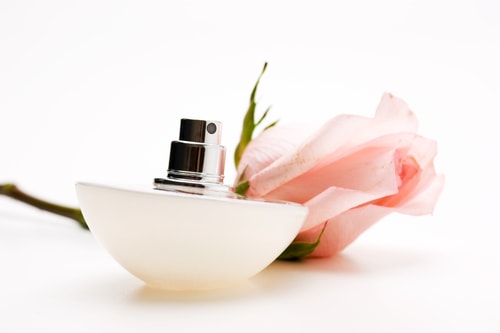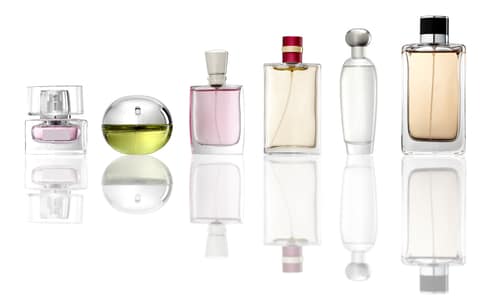Registration of Smell, Fragrance, Olfactory marks and Aroma Trademarks - Global Overview
What’s in a smell? Smell is one of the five senses. Human mind reacts differently to smells. Smell is abstract and often gets linked to obscure events such as the smell of success or smelling a rat. ‘Would a rose by any other name really smell as sweet?’ - Shakespeare’s Romeo & Juliet (2:2)
 Speaking of smells, a new invention surrounding smell was announced very recently. Developed by a team from University of Bristol’s Department of Computer Science, a multi-sensory display system called ‘SensaBubble’ has been invented that generates scented bubbles to deliver information to different people using different senses. A new patent by PepsiCo (Publication number WO2013032631 A1, March 7, 2013) cites a capsule encapsulating aroma to make Pepsi product smell as invigorating as drinking it.
Speaking of smells, a new invention surrounding smell was announced very recently. Developed by a team from University of Bristol’s Department of Computer Science, a multi-sensory display system called ‘SensaBubble’ has been invented that generates scented bubbles to deliver information to different people using different senses. A new patent by PepsiCo (Publication number WO2013032631 A1, March 7, 2013) cites a capsule encapsulating aroma to make Pepsi product smell as invigorating as drinking it.
The continued development in the field of science and biotechnology will unveil more inventions involving smell in the near future but a question that arises is whether smells can be protected. In other words, will laws and regulations keep pace with continuing development in the field of science and technology?

Intellectual property laws aim at dealing with technological innovations besides protecting as much as possible the creation and the economic interests that usually get raised with such inventions. Accordingly, intellectual property laws offer three principle protections – patents for inventions, trademarks for signs that are capable of being represented graphically, and copyrights – for the protection of literary, artistic and scientific works. The UAE law covers protection of sound and motion pictures under the copyright law (Law number 7 of 2002, as amended) but it is not currently possible to register smell under UAE’s intellectual property law. A unified GCC trademark law is on its way, and Bahrain has recently approved and adopted the same in February 2014. Further regulations are awaited, and although UAE has adopted the unified GCC law, this law is yet awaiting implementation. That said, UAE is house to thousands of five-star hotel properties, home to world’s best brands and an increasing number of firms in perfume and fragrance industry that cater to local as well as international markets. Although the current position under UAE law is clear from above, these firms may be interested in registering their perfumes or fragrances in overseas markets, and if so, a question arises as to whether these perfumes or fragrances are registrable as a trademark, patent or copyright and secondly jurisdictions that afford such protection.
Starting on with marks, let's understand whether and which countries consider a) smells to be registered as trademarks; and b) precise requirements imposed under laws of respective countries. In essence, conventional trademarks provide protection to logos, words, or graphical designs applied to goods or packages. However, non-conventional trademarks may consist of color, scents, sounds, tastes, touch, or motion to name a few. Smell marks are often referred to as olfactory marks.
The term ‘olfactory’ traces its origin from medical science. The roof of each nostril is termed as nasal mucosa, a region that contains sensory epithelium called olfactory epithelium. The epithelium houses epithelial cell in form of pigment that absorbs radiations such as infrared and receptor cells that possess a knob above the epithelial surface, from which extend 8-20 olfactory cilia. These cilia contain smell receptors.
Contrary to what one would expect, the registration of the olfactory mark has not achieved the desired success. One argument leveled against smell marks is that temperature, humidity levels, and wind conditions can greatly affect both potency of a scent and the scent itself. Several attempts have been made in the past to record these marks at international level, but the success rate has been relatively low. In the United Kingdom, the paradigmatic examples are “floral fragrance/smell reminiscent of roses as applied to tires (no. 2001416) and the strong smell of bitter beer applied to flights for darts (no. 2000234). “Both registrations were applied for on 31 October 1994 (the first day of the coming into force of the 1994 Trade Marks Act), and as such, would possibly have been the first marks of this type encountered by the Registrar ”, these marks remained active at least until 2012.
Australia’s trademark law defines trademark as ‘A trademark is a sign used, or intended to be used, to distinguish goods or services dealt with or provided in the course of trade by a person ...’ Section 6 of the law clarifies that sign includes the following or any combination of the following, namely, any letter, word, name, signature, numeral, device, brand, heading, label, ticket, aspect of packaging, shape, color, sound or scent. Accordingly, Mr. Cee of JKL Perfumes in UAE can, in fact, register a scent mark in Australia. The trademark application must include a graphical representation of the scent mark. This representation could be by way of a verbal description of the scent such as "the scent of pine." Mr. Cee in the present case, however, cannot register these scents if they are i) natural scents; ii) masking scents; iii) scents which are common to trade;, etc. Examples include vanilla, chocolate, eucalyptus, and the scent of lemon.
Canada’s Federal Government recently introduced Bill C-31 cited as Economic Action Plan Act 2014 on 28 March 2014. Bill C-31 seeks to amend nearly 40 different statutes. Prior to Bill C-31, Canada had proposed Bill-8 and Bill-56 on 1 March 2013 ‘Combating Counterfeit Products Act’. Bill C-31 amends definitions of the trademark to now include scent, sound, taste, and texture. Mr. Cee just got lucky!
Interestingly, the word Hong Kong means ‘fragrant harbor’. Hong Kong Trademark Ordinance (Chapter 559) allows registration of smell marks. In fact, the Intellectual Property Department of Hong Kong has on numerous instances encouraged firms to register smell marks. Smell marks may be described in the form “the scent of newly mown grass”.
South Africa’s Companies and Intellectual Property Registration Office (the CIPRO) in 2009 issued guidelines with regard to registration of non-traditional trademarks (Patent Journal number 2, Volume 42, February 2009). These guidelines provide clarity on procedures to be followed in the registration of non-traditional trademarks. Although South African Trademark Act (Law 194 of 1993) can be interpreted to be somewhat restrictive when considering registration of these marks, it does not prohibit their registration.
 Morocco’s trademark law permits registration of smell marks pursuant to Article 133 contained in Title V of Industrial Property Law number 17-97 of 2000. It is likely that Thailand may consider registration of smell marks however further regulations are awaited in this regard.
Morocco’s trademark law permits registration of smell marks pursuant to Article 133 contained in Title V of Industrial Property Law number 17-97 of 2000. It is likely that Thailand may consider registration of smell marks however further regulations are awaited in this regard.
Other jurisdictions where registration of smell marks is possible under the respective jurisdiction’s trademark law include New Zealand (section 5 (1) of Trademarks Act of 2002, see smells) although registration of smell marks poses practical problems due to the graphical representation requirement, Singapore (the Singapore Trademarks Act 1998 does not define what is a registrable trademark but instead sets out situations in which application will be refused), Korea (Article 2 (1) (C) of the Trademarks Act makes reference to odor as eligible mark for registration), Taiwan (Article 18, Section I, Chapter 2). Decision 486 of the Common Intellectual Property Regime (the Communitarian Law) is applicable to Andean Communities that include Peru, Colombia, Ecuador, and Bolivia. Article 134 (c) recognizes smells and sounds as registrable trademarks. Pepsico’s example above confirms registration of smell marks in the United States. Part II of this article will explore other interesting aspects surrounding the intellectual property. Until then, Mr. Cee can start on building his smell mark portfolio across the globe.
 English
English
 عربي
عربي Русский
Русский 官话
官话 português
português
 Türk
Türk 



















